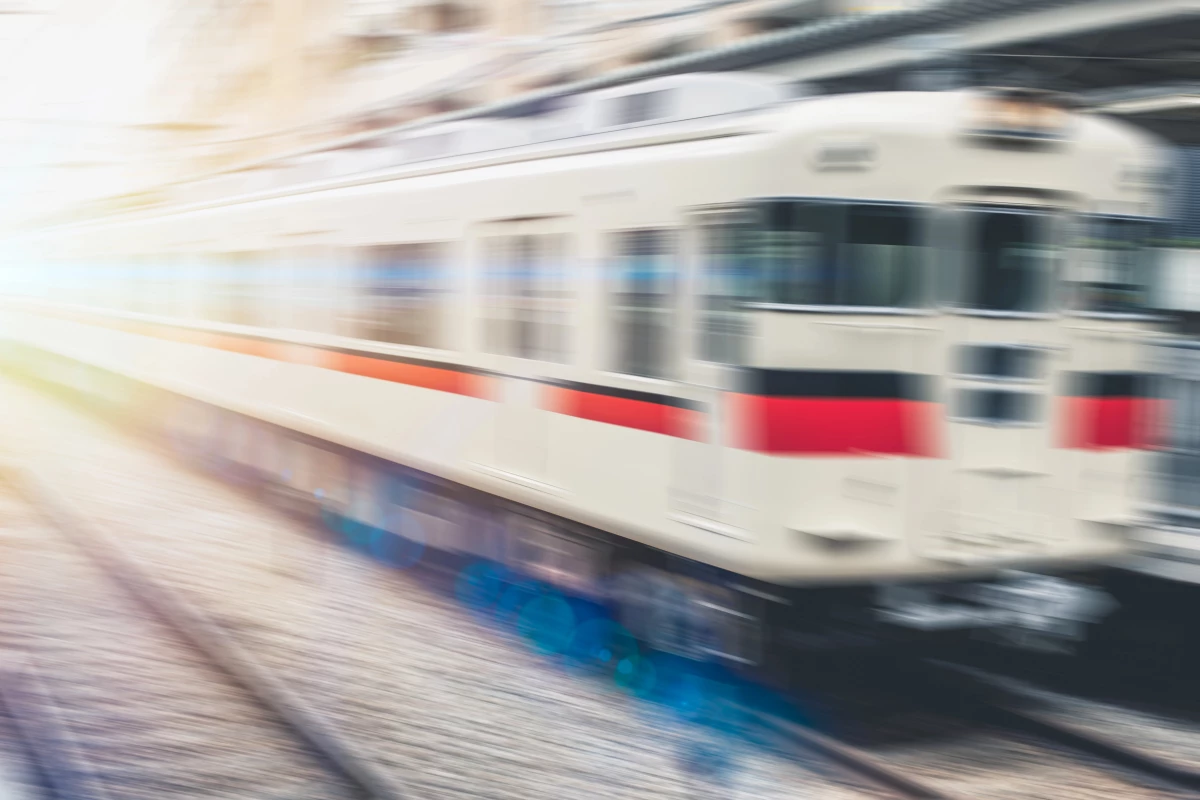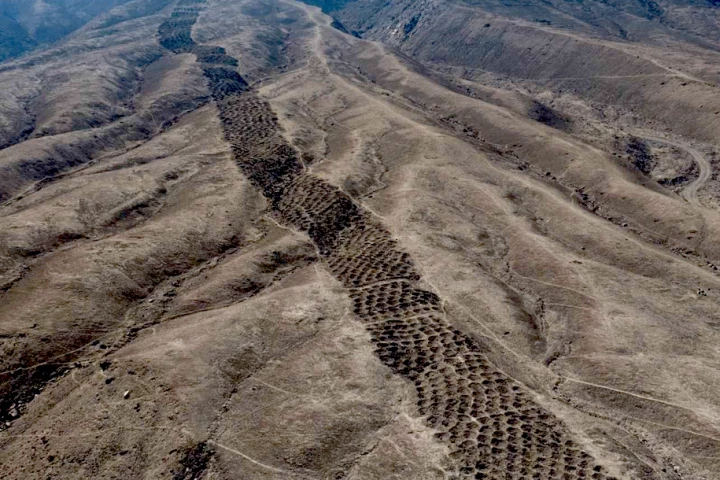Remember that movie Singles from the ’90s? The one with espresso angst, flannel obsessions, and a killer soundtrack featuring the likes of Pearl Jam, Soundgarden and The Smashing Pumpkins?
Somewhere between the love triangles set against the backdrop of the emerging Seattle grunge scene, there’s a subplot that focuses on a character named Steve Dunne, an idealistic city planner with a vision he believes will change the world: the Supertrain.
His plan seemed simple enough: build a citywide high-speed rail network that would cut congestion, clean the air, and maybe, just maybe, make people’s lives a little saner. As Steve puts it in the film, “You give people a reason to get out of their cars. Coffee, great music ... they will park and ride. I know they will.”
Back then, Steve’s dream of a cleaner, connected future built on rails felt more nostalgic than realistic. Cars were, and still are, the ultimate freedom. They are youth and identity wrapped up in steel and gasoline.
Skip to three decades later and the idea behind Steve’s Supertrain is curiously relevant in a world looking to reduce emissions and simplify urban commutes. What started out as a random movie subplot has become more of a premonition, and decades later we are seeing the rhythm of the idea echoing beyond the Seattle skyline.
Rail lines once written off as relics are stirring back to life. Europe is reviving its night trains. Asia’s networks stretch across mountains and borders. Even the United States, which can sometimes appear allergic to collective transit, is once again flirting with the idea that speed and sustainability might share the same track. Cities like Seattle are expanding light-rail networks that connect neighborhoods once divided by traffic and distance.
And the call isn’t just coming from idealists this time – the prestigious science journal Nature is also now arguing for a global rail revival – not as a nostalgic nod to the past, but as a pragmatic cornerstone of climate strategy. The authors argue reviving rail isn’t only about transport efficiency, but about equity and reconnecting rural regions left behind by shrinking air routes and urban sprawl. Their case is simple: if the world is serious about climate drawdown, rails must carry part of the load.
And the data supports that call to action and sense of urgency. According to IEA’s latest estimates, rail now carries about 7% of global passenger travel and 6% of freight tonne-km, yet accounts for approximately 1% of transport-related emissions. It’s one of the few systems that moves millions while keeping sustainability and emissions in check.
Why Trains Matter Again
The return of rail isn’t just about nostalgia or novelty; it’s about adapting in a fast-paced world and finding balance. Transportation today contributes a large share of global greenhouse gas emissions, with cars and planes being a significant part of that equation.
In Great Britain alone, the Office of Rail & Road reports that total passenger and freight train CO₂e emissions rose ~5% in 2023–24 to 2,357 kilotonnes, with passenger service accounting for ~1,917 kt and freight ~440 kt.
When it comes to efficiency, rail often outshines its competition. Studies show operating emissions for rail can be as low as 31 g CO₂e per passenger-km on electrified routes, a number far below many conventional car or plane comparisons.
Meanwhile, comparisons of transport modes highlight rail’s comparative advantage. One analysis notes national rail emits ~35 g CO₂e per kilometer, while average gasoline cars emit ~170 g - meaning that train travel can correspond to only ~20% of the carbon per person compared to driving.
But the appeal of trains goes deeper than simple emissions statistics. Trains offer something our car-centric world has quietly eroded – shared space. A train car is democracy on wheels: executives beside students, tourists beside grandparents, everyone staring out the same window at the same horizon. There’s equity in that, and efficiency too. Trains restore time that freeways steal: hours you can read, work, talk, or simply grab some shuteye.
Economically speaking, trains also have the ability to stitch regions back together through infrastructure and job creation. The US Department of Transportation estimates that every US$1 billion invested in rail infrastructure creates about 24,000 jobs and generates roughly $2.50 in economic return for every dollar spent. In Europe, regions served by new high-speed lines have seen tourism rise by as much as 25 to 30% within five years. Towns once bypassed by interstates are humming again when the tracks reopen.
Even Project Drawdown – a leading nonprofit that ranks global climate solutions by impact – lists rail and transit improvements among the world’s top 25 strategies. By mid-century, those efforts could avoid more than 5 gigatons of CO₂ – roughly equivalent to the annual emissions of the entire United States. A jaw-dropping number, to say the least.
On the Other Track
Of course, not every set of tracks leads to progress. Big rail projects can have a way of derailing due to politics, budgets, and geography. California’s high-speed line, for example, is a poster child for stalled progress: envisioned as a sleek bullet route between Los Angeles and San Francisco, it’s now years behind schedule and billions over budget. Across the Atlantic, Britain’s HS2 project has faced similar turbulence, shrinking in scope even as costs expand.
The plain truth is, trains are hard.
They demand coordination across decades rather than election cycles. They require land, patience – and more importantly, public will. But these failures don’t erase the point; they just remind us that no single fix works everywhere. Even Project Drawdown makes this plain, there’s no silver bullet.
Instead, progress depends on a mosaic of smaller, smarter moves including renewable energy, regenerative agriculture, better transit, and cleaner industry, to name a few. Trains have their place in that mix, alongside electric cars, bikes, buses, and better urban planning.
The Long Return
The world Steve Dunne imagined in the early 1990s – the one where trains save us all – was charming, but ultimately incomplete. Even in the film, that truth lingers between the lines, when a character named Linda responds to his idealism with quiet honesty: “I still love my car, though.”
It wasn’t cynicism, just honesty. And maybe Linda was right. We'r well into the 21st century and people do still love their cars. Not just for what they do, but for the quiet message they send about who we are. A car is privacy, identity, rhythm; it’s the feeling of controlling your own small world. Even in an age of shared rides and climate deadlines, that emotional bond hasn’t, and likely won’t, go away any time soon.
But maybe it doesn’t have to. The truth is, we’ll always need more than one way forward. Progress isn’t about choosing one path over another; it’s about building a system where each solution supports the whole – trains linking cities, electric cars connecting the gaps, and local transit filling what’s left in between.
In the end, maybe that’s what progress looks like. Not one path replacing another, but all of them moving forward together. The goal isn’t just to move faster, but wisely, toward a world that can sustain the journey.





